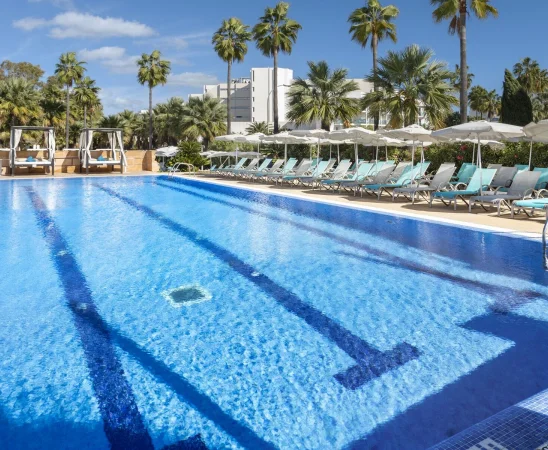Cala Millor, Mallorca
A corner full of life and tranquillity in Mallorca.
Cala Millor, situated on Mallorca’s eastern coast, is the perfect destination for those looking to enjoy the Mediterranean. Its expansive beach with crystal-clear waters is ideal for sunbathing or enjoying activities. The seaside promenade, filled with restaurants, bars, and shops, offers the opportunity for an afternoon stroll with views of the sea. Cala Millor also stands out for its lively atmosphere, featuring activities to suit all preferences. Whether for relaxation, exploration, or thrilling seaside adventures, Cala Millor is a corner of Mallorca that guarantees unforgettable memories.

Fauna and Flora
The Levante Peninsula of Mallorca hosts a remarkable diversity of habitats.
The Parc de Llevant is a 1,700-hectare nature reserve under special protection for birds, home to colonies of Audouin’s gulls, Eleonora’s falcons, booted eagles, and sparrowhawks. Its Mediterranean tortoise populations are particularly noteworthy.
The vegetation is also exceptionally rich and varied, featuring pine forests, holm oak woodlands, and the characteristic flora of the Mallorcan garrigue. Punta de n’Amer, located between Sa Coma and Cala Millor, is an area classified as a Natural Site of Special Interest due to its outstanding natural, cultural, and ecological value.
Spanning 200 hectares, it boasts remarkable diversity with dunes, farmland, and stretches of pine and juniper woods. In addition to typical local plants such as the sea lily, one can find samphire and statice.
Notable fauna in this area includes mammals like the harvest mouse and wild rabbit, as well as birds such as the cormorant, warbler, and shearwater.

Gastronomy
Traditional Mallorcan cuisine is flavourful and diverse. Among its typical dishes are frit de porc, tumbet, arròs brut, and Mallorcan soups.
The signature cold meat of Mallorca is sobrasada, made with pork, lard, and paprika.
The ensaïmada is the crown jewel of pastry. Shaped like a spiral, it can be filled with cream, chocolate, custard, or angel hair, among other options. Wine is also an integral part of the island’s culinary heritage. Two geographical areas hold Designation of Origin: Binissalem and Pla i Llevant.

History and Culture
The archaeological site of S’Illot, located just a few kilometres from Cala Millor, is one of the finest examples of the Talayotic culture, although the caves of Ses Crestes and Ses Pedreres were already inhabited during the Pre-Talayotic era, around 1500 BC.
At one end of Punta de n’Amer stands a square-shaped defence tower built in the 17th century, now transformed into a small museum offering spectacular views of the coastline.

Leisure and Free Time
Sports enthusiasts can enjoy a wide range of activities in Cala Millor, including horse riding, tennis, squash, paddle tennis, football, go-karting, golf, shooting, diving, fishing, or exploring the region’s numerous cycling routes by bike.
The Auditorium Sa Màniga complements the area’s recreational offerings with intriguing cultural programmes for fans of dance, theatre, or music.

Beaches and Surroundings
From Mallorca’s Levante, Cala Millor boasts a wide and expansive sandy beach bathed by beautiful, deep-blue waters.
A spacious seaside promenade borders the coastline, inviting leisurely evening strolls. Over two kilometres of fine sand form one of the island’s best-preserved tourist hubs, offering modern facilities and comprehensive services for its visitors.
Adjacent to Cala Millor beach, you’ll find the charm of the quaint fishing village of Cala Bona and the stunning beaches of des Ribell, Sa Marjal, and Costa dels Pins, alongside other natural attractions in the area.
Hotels in Mallorca
No filters match any hotel


